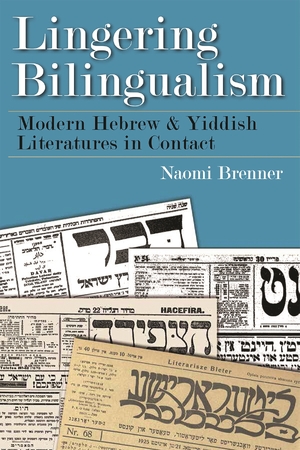"This book questions the clear-cut division between modern Yiddish and Hebrew literatures, arguing that they maintained multifaceted cultural contacts across linguistic boundaries.”"—The Yiddish Forward
"By detailing the perspectives of the main writers and publishers on each side of the debate and illustrating the ideologies of bilingualism that characterized both Yiddishists and Hebraists, the author shows how these years saw the development of diverse paradigms in which, at least for a time, Yiddish and Hebrew cultures coexisted and were even seen as nurturing each other. Brenner thus tells the poignant story of how Jewish writers and intellectuals strove through bilingualism to move toward a new and forward-looking Jewish linguistic and literary culture."—Choice
"The author analyzes several examples of poetry and prose in minute detail. She discusses the debates and theories about translation between the languages throughout the twentieth century. In addition to her own meticulous investigation of the particular bilingualism and translingualism of these Jewish languages, she synthesizes all the modern research on this subject. This is an academic work that presupposes familiarity with the languages and writers under discussion. Highly recommended for academic collections on language, literature, and translation studies."—AJL Review
"Brenner’s meticulously researched and elegantly written work reveals a unique set of cultural and linguistic conditions during a time when the majority of Jewish people were linguistically and culturally bound to two Jewish languages. Brenner convincingly demonstrates that Hebrew and Yiddish constantly altered each other and presents a solid case for the idea that Jewish culture was truly 'bilingual' for most of the late nineteenth and twentieth centuries, and that such a persistently bilingual quality—even to this day—profoundly shaped modern Jewish literary culture."—Colorado Review
"A rewarding learning experience in Hebrew-Yiddish cultural-linguistics."—Newsletter of the National Association of Professors of Hebrew
Description
In a famous comment made by the poet Chayim Nachman Bialik, Hebrew—the language of the Jewish religious and intellectual tradition—and Yiddish—the East European Jewish vernacular—were “a match made in heaven that cannot be separated.” That marriage, so the story goes, collapsed in the years immediately preceding and following World War I. But did the “exes” really go their separate ways?
Lingering Bilingualism argues that the interwar period represents not an endpoint but rather a new phase in Hebrew-Yiddish linguistic and literary contact. Though the literatures followed different geographic and ideological paths, their writers and readers continued to interact in places like Berlin, Tel Aviv, and New York—and imagined new paradigms for cultural production in Jewish languages. Brenner traces a shift from traditional bilingualism to a new translingualism in response to profound changes in Jewish life and culture. By foregrounding questions of language, she examines both the unique literary-linguistic circumstances of Ashkenazi Jewish writing and the multilingualism that can lurk within national literary canons.
About the Author
Naomi Brenner is assistant professor of Hebrew and Israeli culture in the Department of Near Eastern Languages and Cultures at The Ohio State University.
Series: Judaic Traditions in Literature, Music, and Art
6 x 9, 320 pages, 6 black and white illustrations
January 2016

